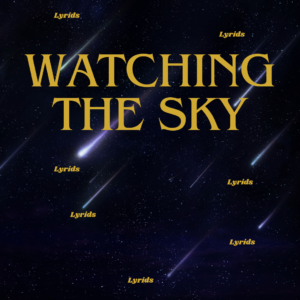The Lyrids meteor shower will peak this year on the night of April 21-22. If you know me, you know I am a skywatcher. I typically love anything about space. I will pull out the telescope to watch the Space Station fly  over, eclipses, meteor showers, and other sky phenomenon. Here are five (5) fun facts about the Lyrids:
over, eclipses, meteor showers, and other sky phenomenon. Here are five (5) fun facts about the Lyrids:
- Ancient Observations: The Lyrid meteor shower is one of the oldest known meteor showers, with records of its observations dating back over 2,600 years. Chinese astronomers recorded the Lyrids in 687 BC.
- Origin: The Lyrid meteor shower is caused by the Earth passing through the debris trail left by the comet C/1861 G1 Thatcher. This comet orbits the sun once every 415 years, leaving behind a trail of debris that intersects with Earth’s orbit.
- Peak Performance: The Lyrid meteor shower typically peaks around April 22nd each year. During its peak, observers can expect to see around 10 to 20 meteors per hour under optimal conditions.
- Fast Meteors: Lyrid meteors are known for their fast and bright trails. They move at speeds of around 49 kilometers per second (110,000 miles per hour) as they enter Earth’s atmosphere, creating bright streaks across the sky.
- Variable Activity: While the Lyrids typically produce around 10 to 20 meteors per hour during their peak, there can be occasional outbursts with much higher rates. In some years, observers have reported seeing up to 100 Lyrid meteors per hour during outburst years.
So get ready for some skywatching. You will not need a telescope. “According to NASA, the Lyrids are best viewed in the Northern Hemisphere during the dark hours (after moonset and before dawn). Lie flat on your back with your feet facing east and look up, taking in as much of the sky as possible. After about 30 minutes in the dark, your eyes will adapt, and you will begin to see meteors. Be patient – the show will last until dawn, so you have plenty of time to catch a glimpse.”
The heavens declare the glory of God; the skies proclaim the work of his hands.” – Psalm 19:1
Disclosure: Many of the linked products and services I recommend are affiliate links, which means I may receive a small commission at no additional cost to you. As an Amazon Associate, I earn from qualifying purchases.